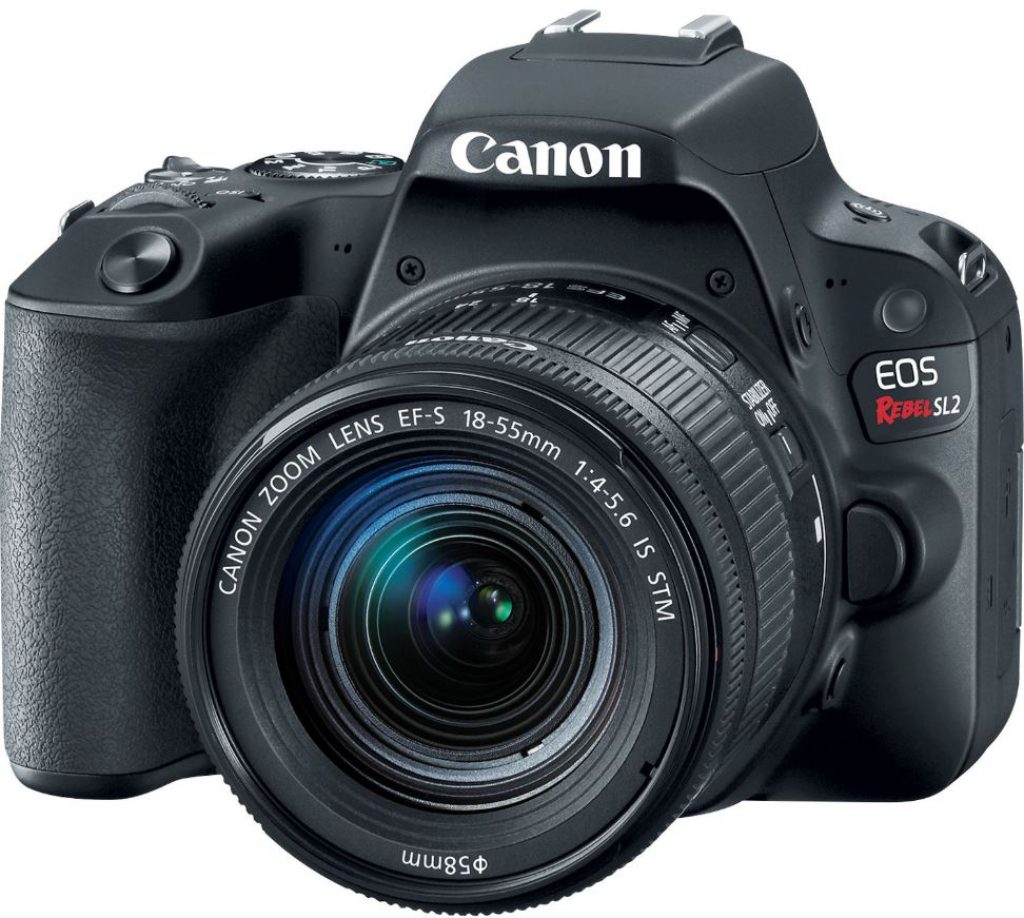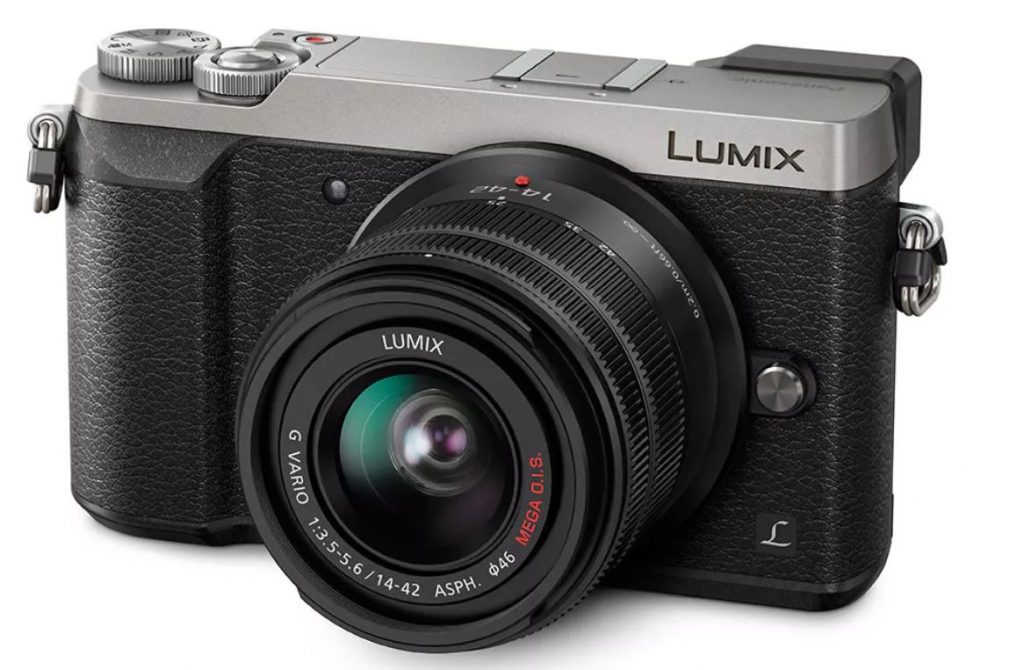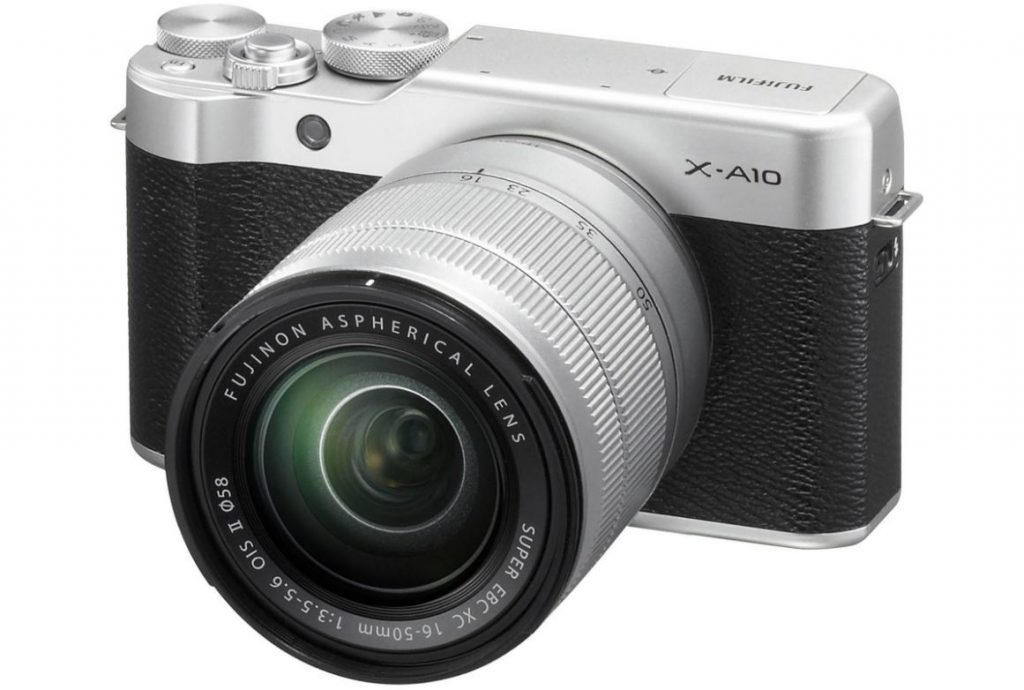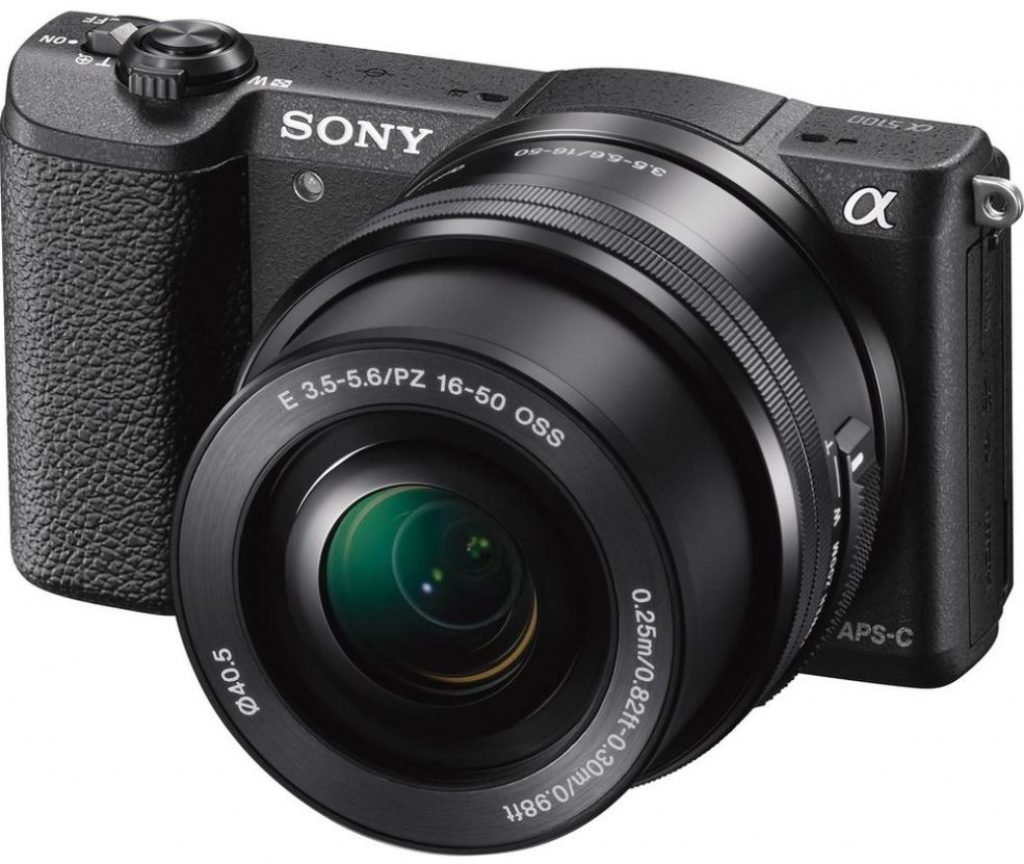Do you want to buy your first camera? There is a lot of choices. Are you going for the best cameras for beginners of a brand with a rich photographic heritage, or a snapper of a company that may also have made your television and microwave? Do you have to choose a DSLR at an entry level or a mirrorless camera? And how much do you have to spend?
The good news is that this is a great time of the year to buy a camera for beginners. We have seen a lot of cheap camera operations right now – and our price comparison tool lists the best offers below, so you can be sure that you see the lowest possible price.
So what are the Best Cameras For Beginners at the moment? Everyone has different needs, and the best model for one person does not necessarily have to be suitable for another. Fortunately, it is nowadays difficult to buy a really ‘bad’ camera, but it still pays to do some research to make sure that you are just as satisfied with your choice in a few years as when you first the device will use.
Best Cameras For Beginners Comparison Table
Cameras For Beginners
Camera Name
Megapixels
Max Video Resolution
Canon EOS Rebel SL2/EOS 200D
24.2MP
1080p
Nikon D3500
24.2MP
1080p
Canon EOS Rebel T7/EOS 2000D
24.1MP
1080p
Canon EOS Rebel T100/EOS 4000D
18.0MP
1080p
Nikon D5600
24.2MP
1080p
Pentax K-70
24.2MP
1080p
Panasonic Lumix GX80
16.0MP
4K
Fujifilm X-A10
16.3MP
1080p
Sony A5100
24.3MP
1080p
Olympus E-M10 III
16.1MP
4K
How To Pick The Best Cameras For Beginners?
Here we look at three crucial considerations to help you refine the list. Then we bring you our selection of the best cameras for beginners, split into the best entry-level models for SLR cameras, mirrorless and compact options:
- How will you use it? – If you need a camera for everyday photography, then you want something as light as possible. The lighter (and smaller) the camera, the more inclined you will be to use it and take it with you wherever you are. A compact camera like the Panasonic TZ70 (number 11 in this list) or a light, a mirrorless setup like the Panasonic GX80 (number seven) would be ideal. Of course, there are reasons to go for something bigger. If size is not a priority, or if you want to use larger lenses, consider a DSLR such as the Nikon D5600 (number five) or Pentax K-70 (number six). These are better suited for some types of photography and ensure excellent operation.
- What other cameras and lens options are in that system? – If you invest in a system with lenses and accessories, it is worth examining which other camera and lens options are currently available. You may find that a certain system offers you many different lenses and camera housings that you can use in the future, and this can be most logical. That is not to say that you should not go for a system that has fewer compatible lenses or bodies that you might want to go to in the future, only that you have to be aware of what your options are and likely to be when you get your kit. Many mirrorless camera manufacturers work hard to develop their assortment and we see that new products are often announced.
- Do you want a camera just for stills, or video too? – If you like to make a video recording, pay attention to models with focusing systems that work well during video recordings. Sony’s Fast Hybrid AF and Canon Dual Pixel CMOS AF systems, found in the Sony A5100 (number nine) and Canon EOS 200D (respectively number one), are two examples. The Canon EOS 200D (EOS Rebel SL2) and Nikon D5600 also offer both microphone inputs, so they are ideal for when you want to use an external microphone to take the audio recording to a higher level. The microphones built into cameras are only suitable for general use, and no videographer who is serious about their work would consider using them for anything other than that.
Top 10 Best Travel Cameras In The World
Canon EOS Rebel SL2/EOS 200D

- Type: DSLR
- Sensor: APS-C
- Megapixels: 24.2MP
- Lens mount: Canon EF-S
- Screen: 3in vari-angle touchscreen, 1,040,000 dots
- Max burst speed: 5fps
- Max video resolution: 1080p
- User level: Beginner
Canon’s entry model EOS Rebel SL2 DSLR (sold as the EOS 200D in Europe) has a vari-angle touchscreen on the back as the main cry point. Allows you to display images and Full HD videos from all kinds of tricky positions (and even take selfies without bothering). We also like the fact that you can start with a simple user interface with instructions when you just cut your photographic teeth and then switch to the default setting if you are more confident and want more options. In addition, you get Wi-Fi and NFC to keep you connected to smart devices without cables.
You also get 5 FPS burst recordings and the DIGIC 7 processing system, in addition to Canon’s Dual Pixel CMOS AF system to keep autofocus fast in live view and smooth when recording videos. Another real bonus is that the Rebel SL2/200D will accept more than 30 years of lenses – and many other companies than Canon. The company has squeezed a lot of goodness into the body of the EOS 200D, making it one of the best cameras for beginners.
Pros:
- Guided screen options
- Pivoting touchscreen
Cons:
- Kit lens maximum aperture only f/4
- AF system only has nine points
Nikon D3500

- Type: DSLR
- Sensor: APS-C
- Megapixels: 24.2MP
- Lens mount: Nikon F (DX)
- Screen: 3in, 921,000 dots
- Max burst speed: 5fps
- Max video resolution: 1080p
- User level: Beginner
Do not worry if DSLRs are complicated. Typical of Nikon’s D3xxx series cameras, the latest Nikon D3500 has a brilliant ‘Guide’ recording mode and is one of the best cameras for beginners. This works as a fully interactive self-study on photography, delivered via the LCD screen at the back. It explains how, when and why different camera settings are used for the best effect, simple and efficient. The control buttons of the camera are also rectilinear and easy to control.
But compared to some competing DSLRs, the Nikon D3500 is less able to grow while you learn new tricks and techniques. For example, there is no Custom Settings menu to match the camera functions to your preferences, as shown in any other range of Nikon DSLRs, from the D5xxx cameras upwards. Autofocus for Live View and movie recording is also very slow. All in all, the image quality and performance are very good, and the burst speed of 5 fps is sporty for an entry-level DSLR.
Pros:
- Interactive ‘Guide’ shooting mode
- Solid performance; good handling
Cons:
- Fairly basic controls
- LCD has no tilt or touchscreen
Canon EOS Rebel T7/EOS 2000D

- Type: DSLR
- Sensor: APS-C
- Megapixels: 24.1MP
- Lens mount: Canon EF-S
- Screen: 3in fixed, 920,000 dots
- Max burst speed: 3fps
- Max video resolution: 1080p
- User level: Beginner
Most DSLRs from Canon are pretty beginner friendly, but the new EOS Rebel T7 (better known as the EOS 2000D outside of North America) is especially easy to experience. The simple recording mode dial has a fully automatic setting, complete with “intelligent” real-time scene review, plus numerous scene modes. A handy function guide is included that helps you understand menu options, plus an interactive “Creative Auto” mode that bridges the gap between standard and more advanced shooting modes, such as aperture/shutter priority and fully manual modes.
With a respectable number of 24.2 megapixels, a high-res LCD and an adjustable diopter viewer, the Rebel T7/2000D has many of the fineries stripped from the cheaper 4000D and has an excellent price-quality ratio. Although the kit lens of the T7 achieves image stabilization, it is still a relatively old design with a noisy autofocus motor. But overall, it is one of the best cameras for beginners right now.
Pros:
- Inexpensive for a DSLR with kit lens
- Built-in WiFi and NFC
Cons:
- Kit zoom has a noisy autofocus motor
- Slow burst rate
Canon EOS Rebel T100/EOS 4000D

- Type: DSLR
- Sensor: APS-C
- Megapixels: 18MP
- Lens mount: Canon EF-S
- Screen: 2.7in fixed, 230,000 dots
- Max burst speed: 3fps
- Max video resolution: 1080p
- User level: Beginner
Nobody wants to buy an expensive camera, only to discover that photography is not for them. Canon reduces the risk with this new and remarkably cheap DSLR kit. It is very suitable for beginners, with the same ‘intelligent’ full-auto recording mode and a function guide as you can find in more expensive Canon cameras. The ‘Quick’ menu is usually intuitive and there are many scene modes and more advanced shooting modes. There is also a Creative Auto mode to help you go from the ‘basic zone’ to ‘creative zone’ modes.
The 18MP image sensor has a little lack of megapixels compared to most current DSLRs and there are more serious cuts in other areas. We do not expect a touchscreen for this price, but the LCD at the back is disappointingly small and has a low number of pixels. A bigger problem if you do not have a perfect view is that the viewfinder does not have a diopter setting, as can be seen with just about any other DSLR on the market. Ultimately it is a very simple and one of the best cameras for beginners.
Pros:
- Super-cheap to buy
- Easy to use
Cons:
- Poor viewfinder and screen
- No image stabilizer on the kit lens
Nikon D5600

- Type: DSLR
- Sensor: APS-C
- Megapixels: 24.2MP
- Lens mount: Nikon F (DX)
- Screen: 3.2in vari-angle touchscreen, 1,037,000 dots
- Max burst speed: 5fps
- Max video resolution: 1080p
- User level: Beginner
Perhaps less suitable for absolute beginners, the Nikon D5600 lacks the interactive guide recording mode of the D3400, but it is still easy to use with full modes Auto, Scene and effects and also a lot of manual exposure control. The 39-point AF system saturates the frame to a greater extent than the systems on the DSLRs above, making it even better for tracking moving subjects and for more precise control in general, while the 3.2-inch touchscreen is more spacious is then most others. Autofocus is not as perfect as on the Canon EOS 200D or one of the compact system cameras here (especially for video), but the overall performance is still excellent and the lens options are plentiful.
Top 10 Best Mirrorless Cameras Right Now
Pros:
- Advanced AF system
- Performs well at high ISOs
Cons:
- Not the cheapest entry-level camera
- SnapBridge not great
Pentax K-70

- Type: DSLR
- Sensor: APS-C
- Megapixels: 24.2MP
- Lens mount: Pentax KAF2
- Screen: 3in tilting, 921,000 dots
- Max burst speed: 6fps
- Max video resolution: 1080p
- User level: Beginner
The K-70 is a bit more expensive than some of the other options here, but it is undoubtedly the most advantageous entry level DSLR you can buy now because it contains so much you can not find at any other DSLR at this price point. For example, the standard pentamirror viewfinder found with every other comparable DSLR is actually a larger, brighter pentaprism on the K-70, while burst images at 6 fps and the maximum shutter speed are very respectable at 1/6000sec. Perhaps more important is that the image stabilization is built into the camera instead of the lens itself, which means that you benefit from this with all the mounted lenses and that the whole is packed in a weather-resistant, cold store. It is not the lightest model and you do not get the same video autofocus as with the EOS 200D from Canon, but if you want the best value for money on this level, the K-70 is one of the best cameras for beginners.
Pros:
- Image stabilization
- Robust and weather-resistant
Cons:
- Autofocus noisy and sluggish
- Somewhat heavy
Panasonic Lumix GX80

- Type: Mirrorless
- Sensor: Micro Four Thirds
- Megapixels: 16MP
- Lens mount: Micro Four Thirds
- Screen: 3in tilting, touchscreen, 1,040,000 dots
- Max burst speed: 8fps
- Max video resolution: 4K
- User level: Beginner
The diminutive Panasonic Lumix GX80 can be adapted to the needs of every user, from the beginner who only wants to rely on the Intelligent Auto option, to the photographer who wants full control over all exposure settings, such as shutter speed and aperture. This is also the only option in this selection with 4K video recording, in contrast to the Full HD options found elsewhere (although you also get full HD recordings here, when you do not need 4K). The built-in electronic viewfinder makes it a great option to use in harsh sunlight or dark conditions, while the tiltable screen makes it easy to photograph from ground level. Together with the small Micro Four Thirds lenses from Panasonic, this is an excellent choice for the best cameras for beginners.
Pros:
- 4K video recording
- Electronic viewfinder
Cons:
- Limited long exposures
- Restricted tilt-screen range
Fujifilm X-A10

- Type: Mirrorless
- Sensor: APS-C
- Megapixels: 16.3MP
- Lens mount: Fujifilm X
- Screen: 3in tilting, 1,040,000 dots
- Max burst speed: 6fps
- Max video resolution: 1080p
- User level: Beginner
Despite the lack of a viewfinder, the body of the X-A10 is not as slim as the other CSCs here, but it is still thinner than any of the DSLRs. That advantage is lost due to the relatively large size of the kit lens. As with the Canon EOS 1300D, there is a basic guide with functions to help novice users, with fully automatic basic scene modes and PASM settings that are directly available via the Rotate Mode button. More advanced scene modes with a wider range and filter effects are also available. The image quality is generally very good and the optical stabilizer of the lens of the lens helps to maintain sharp results.
Pros:
- Great image quality
- Optical Stabilizer
Cons:
- No viewfinder
Sony A5100

- Type: Mirrorless
- Sensor: APS-C
- Megapixels: 24.3MP
- Lens mount: Sony E-mount
- Screen: 3in tilting touchscreen, 921,600 dots
- Viewfinder: N/A
- Max burst speed: 6fps
- Max video resolution: 1080p
- User level: Beginner/Enthusiast
The A5100 is now more than three years old, but the fact that it remains in the line-up of Sony says a lot about how relevant it still is. At its launch, it was so well specified that it still offers great value for money now that its price has dropped, with its 24.3 MP APS-C sensor, Full HD video option, 6 fps burst recording mode, flip-up touchscreen and both Wi-Fi and NFC everything we would expect to find on more modern cameras. However, its ace card is the autofocus system, which combines 25 contrast detection points with 179 phase detection AF points, so that it can focus quickly on still images and continuously when recording videos. This type of system is stronger than that on comparable budget cameras that have been released today. Overall, it is one of the best cameras for beginners.
Pros:
- Excellent AF system
- Sound image quality
Cons:
- No viewfinder
- LCD not vari-angle
Olympus E-M10 III

- Type: Mirrorless
- Sensor: Micro Four Thirds
- Megapixels: 16.1MP
- Lens mount: Micro Four Thirds
- Screen: 3.0-inch 1,040k tilt touch
- Viewfinder: Electronic
- Max burst speed: 8.6fps
- Max video resolution: 4K
- User level: Beginner
This mirrorless camera is available in black or silver and has a classic look and feel of yesteryear, and goes back to Olympus OM film cameras that were launched in the seventies with lots of aplomb. The E-M10 III is the least expensive and most beginner-friendly model in the current OM-D range. Still, it has some fabulous features in its small and beautifully designed body. The design is easy on the eye, just like the high-resolution electronic viewfinder and the high-res tiltable touchscreen.
Built-in 5-axis image stabilization works with any connected lens and the 14-42 mm EZ kit zoom lens is a pleasure to use. It is a compact ‘pancake’ design and the power zoom facility is ideal for film shots. Speaking of this, the camera can make 4k UHD movies and fast bursts of photos with up to 8.6 fps. Although the Micro Four Thirds format makes cameras and lenses unusually compact, megapixel counts are often less than generous. The 16.1 MP image sensor of this camera is a good example.
Pros:
- Classic yet functional retro design
- Tilting touchscreen
- High-res viewfinder
Cons:
- Relatively low megapixel count
- Pricier than some DSLRs
Conclusion
A novice digital SLR camera is the natural progression when you think you have outgrown your compact camera or are no longer satisfied with the snaps that you get from your smartphone. If that is the case, you are here at the right place to find out what the best entry-level DSLR is to help you take your photography to a higher level. Our list of Best Cameras For Beginners will surely help you to find your first and ideal camera, as per your needs and budget.
